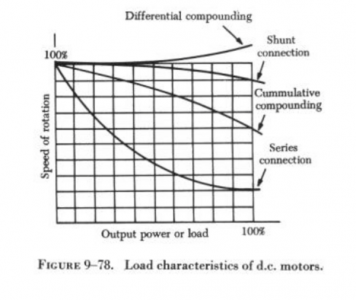- Joined
- Jan 25, 2015
- Messages
- 2,558
The issue i've always had when looking to use DC motors has always been the transformer or power supply required to knock the voltage down.
Stuart
Sorry if i'm just being slow, is that a BLDC motor controller ? Or a pwm dc motor controller?
Stuart
Dunno for sure. Documentation doesn't spell it out in layman's terms.
Says good up to 60 CPM for cycle duty permanent magnet motors, so I'll guess pwm.
Graham's Cycletrol® Series DC adjustable speed controls provide rapid cycling capabilities, while offering higher reliability and lower maintenance compared to clutch/brake mechanisms. The Cycletrol Series consists of two product lines, the 150 Series rated for up to 60 cycles/minute and the C2000 rated for up to 30 cycles/minute.
COMMON FEATURES:
All Cycletrol digital logic inputs are optically isolated
Versatile logic allows direct interfacing with switches and push-buttons or solid state devices
LED function lights are easy-to-see indicators of control status
Transient protection by voltage clamping MOV's and RC networks protect power components against power spikes
Torque limiting by the Cycletrol's adjustable current limit provides motor and drive train protection in the event of machine overloads or jams
Heavy-duty aluminum chassis or NEMA 12 enclosures
The Cycletrol 150 is the fastest cycling DC motor control in the industry. On-board logic controls reduce costly external relays and timing circuits. The 150's reliability is exemplified by a two-year warranty.
Cycle rate up to 60 cpm allows quick, repetitive run/stop operation with cycling duty permanent magnet motors
Wide speed range with full torque available down to 9 rpm
Integral timer enables automatic cycling; eliminates external components and wiring
Start-up current (up to 400%) provides extra starting torque for fast acceleration
Solid-state dynamic brake circuit for faster response without the wear normally associated with a mechanical system
Magnetic circuit breaker standard on NEMA 12 enclosure models
I can get around with electrical work, but I'm no engineer. Perhaps one of the "electrogeeks" on the forum can shed some light on the specs.


